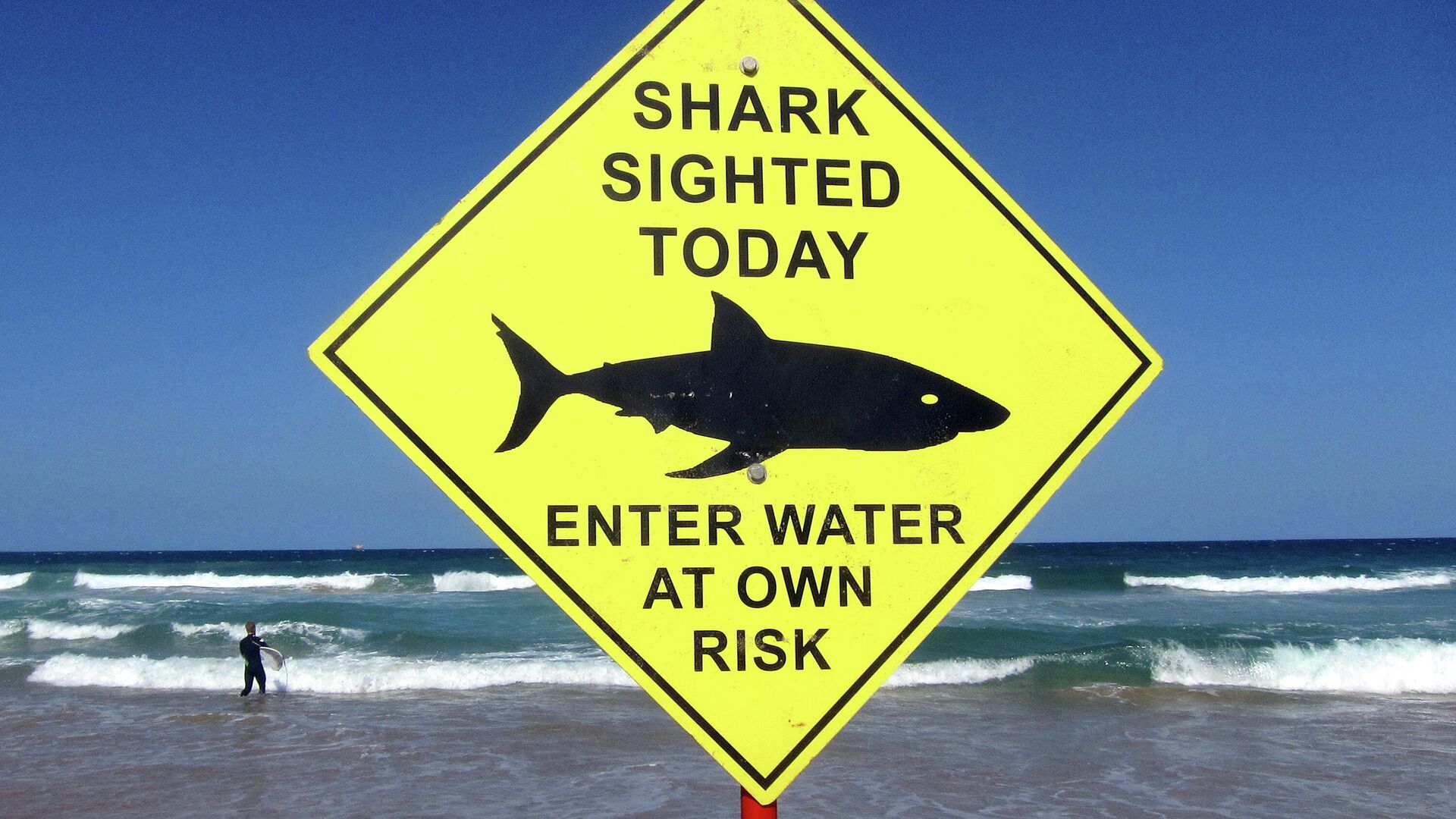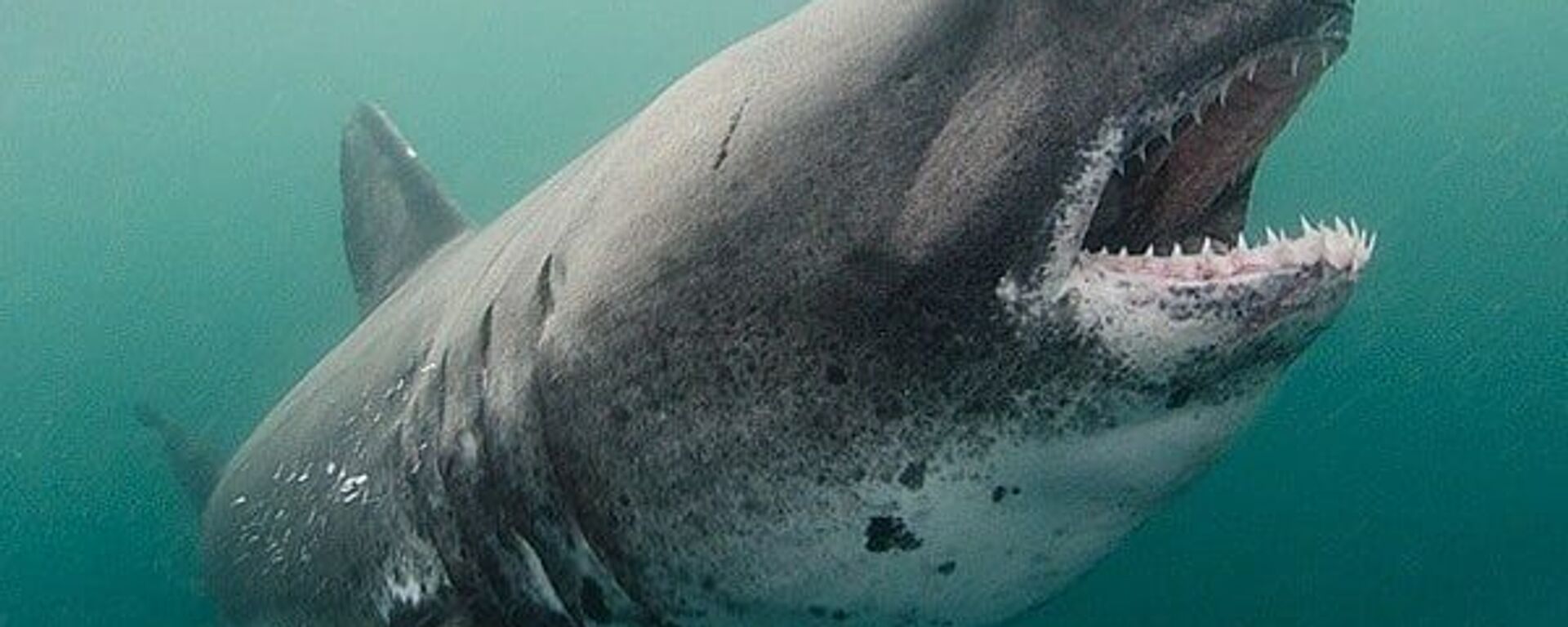What Happens to Sharks After They Attack Someone?

© REUTERS / David Gray
Subscribe
Although shark attacks are rare, they do happen. Off the coast of Sydney, Australia on Wednesday, a man was mauled to death by a great white shark in Sydney’s first fatal attacks in 60 years. Additionally, in July 2020, a woman was killed by a great white shark off the coast of Maine, a first-ever for the state.
But how does one catch a beast when it decides to go rogue? And even if they can, should they?
In east Sydney, where British diving instructor Simon Nellist was mauled to death by a great white shark, the protective measures which had been put in place, such as nets and other deterrents in the water, failed to prevent the attack. Although it’s the city’s first fatal shark attack since 1963, that hasn’t stopped people from taking to social media to express their outrage over Nellist’s death. Many are calling for the shark to be culled.
Shark culling, or just culling in general, is when a state or government deliberately captures and kills an animal after it has killed a person. For instance, bears almost always pay the price after they are caught mauling a human. Yellowstone Park officials are often put in a difficult position when they have to choose between the protection of wildlife and the protection of park visitors.
In 1986, a committee of wildlife biologists set guidelines on how to manage bears. They decided that unless the bear could be deemed a nuisance, conflicts between bears and humans would have to favor the bear.
A ‘nuisance’ bear would fit any of these three indicators: they raid livestock or food stores despite security and protection, becoming comfortable enough to seek out food from humans; they act aggressively, foreshadowing a more lethal threat to park-goers; or they cause significant injury or kill humans during an unprovoked, non-defensive encounter. Officials are also able to track bear DNA back to their “murder suspect,” ensuring that the bear they euthanize is the correct one.
That may be so on land, but great whites live off the coast of various continents and can swim up to 120 km in a day. And even if a great white is caught by officials, there’s difficulty in being able to tell if it’s the one responsible for the attack.
In Western Australia, sharks can be killed if they pose a threat to humans, as part of WA’s 2015 “serious threat” policy, which is a variation on a policy that was first introduced in 2014. Under this policy, the WA Department of Fisheries is allowed to use mobile drumlines as a way to catch sharks deemed a threat to humans. If the shark they are targeting is a great white, WA is first required to apply for an exemption to kill the vulnerable species.
However, in 2016 a great white shark attacked and killed a woman off the coast of WA. The WA Fisheries then attempted to track down the shark, dropping large steel hooks, and hauling up drumlines, but they didn’t catch anything. Their chances of success had been low, anyway.
Since the introduction of the controversial shark culling policy, the use of drumlines against sharks has proved inefficient, and was abandoned in March of 2017. Under former Western Australia Premier Colin Barnett’s government, $1.8 million was put towards shark hazard mitigation projects from 2013 to 2017.
Daryl McPhee, an associate professor of environmental science at Bond University, wrote of the Sydney attack on Wednesday, reminding readers that there are nonlethal alternatives to culling sharks. He says that aerial surveys could be deployed in preventing shark attacks. The use of planes, helicopters, drones, and surf patrol towers are all a possibility. Planes and helicopters are costly though, and the use of drones would involve the constraint of the device’s limited battery life. And surf patrol towers, writes McPhee, have to be able to offer a vantage point more than 40 meters above sea level in order for lifeguards to spot the shark.
McPhee then points to electronic shark deterrents, which he suggests “show substantial promise.” Australian scientists are investigating a technology that would use the acoustic sounds of an orca call, or something similar, to deter sharks. However, the deterrent does not work on all shark species and could be disruptive to other marine life.
While nonlethal shark attack deterrents are still in the making, McPhee suggests in the meantime, that the public should be educated on how to be safe at the beach. “Avoid swimming or surfing in low light levels, avoid beaches near estuaries after heavy rain and flooding, and avoid places where stranded marine mammals are present - as the sites may attract sharks,” he writes.
It’s important to remember too that shark bites are a rarity. Dr. Vanessa Pirotta, who commented on the attack in Sydney on Wednesday, says she understands the community’s shock, but urges people to remember the important ecological role sharks have in Australia’s marine environment.
The likelihood of being killed by a shark in Australia is similar to that of being killed by a kangaroo: one in 8 million. Although shark-related incidents in Australia have doubled since the 1990s, officials say that increase is linked to a growth in Australia’s human population, not sharks themselves, whose population has significantly declined in the past 50 years.
A study published in 2021 by an international team of scientists in the journal Nature, revealed that since 1970, the population of oceanic sharks plummeted more than 70%. And according to a 2018 study, the great white shark community suffered a loss of 92% in their population.
In some incidents, conservation can actually lead to an increase in shark attacks. Seal populations in New England have bounced back from a near-extinct population after the 1972 Marine Mammal Protection Act was instituted. Currently, it’s estimated that there are as many as 50,000 grey seals in New England waters, which many have blamed for the death of a New York woman who was swimming in Harpswell, Maine in July 2020.
Julie Dimperio Holowach, the 63-year-old retired fashion industry executive, was swimming with her daughter when, experts believe, she was mistaken for an injured seal because she was wearing a wetsuit. The great white shark attacked and killed the mother.
Dr. Leonardo Guida, a shark scientist at the Australian Marine Conservation Society, commented on the incident in Sydney on Wednesday. “First of all, we want to extend our sympathies to the friends and family of the swimmer who died in this tragedy, first responders and to those who witnessed it,” he said.
But, Guida went on to condemn the use of drumlines and/or using shark nets in order to catch and kill sharks. He, like McPhee, advocates for the non-lethal use of other shark deterrents like drones and warning systems.
As for the concept of a “rogue shark” that craves human flesh, scientists say there’s no such thing. Dr. Christopher Neff, a lecturer at the University of Sydney, says the theory of a shark craving human flesh is a discreditable theory, but for some reason still influences government policies. "This is a movie monster from a horror movie, this is not a scientific fact," Dr. Neff said.
Both Humane Society International and the Australian Marine Conservation Society, organizations that work to protect the shark and ray populations in Australia, have spoken out against shark culling and net use, which have killed 910 sharks in Australia since 2017.
They argue that shark nets and drumlines not only hurt and injure sharks but have killed other species whose populations are fragile. The organizations say that a total of 290 marine animals have been killed as a result of nets and drumlines, including 27 turtles, 26 dolphins, and 193 rays.
Sharks have existed on Earth for around 450 million years, having survived five major extinctions which were responsible for destroying over 75% of other life forms. But in the past 100 years, sharks have just started to face extinction. When it comes to these rare shark attacks, perhaps it’s time to change points of view when asking who’s really in danger, anyway?

